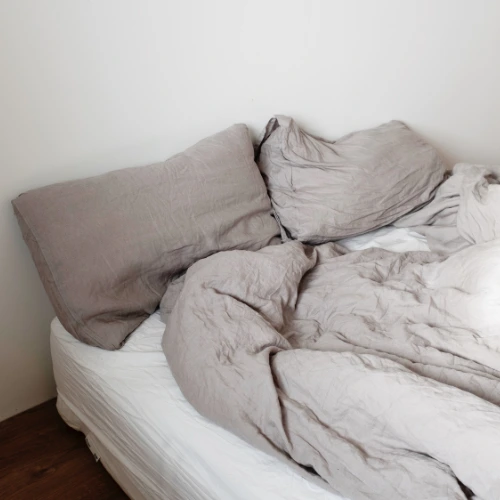The Ultimate Guide to Preventing Bedsores
Are you or someone you know currently dealing with bedsores? Do you want to learn how to prevent them from happening?
Look no further than this ultimate guide to preventing bedsores. Bedsores, also known as pressure ulcers, are painful and dangerous sores that can develop when someone remains in the same position for too long without proper care. They can be particularly problematic for those with mobility issues or who are bedridden.
However, with the right knowledge and care, bedsores can be prevented altogether. In this comprehensive guide, I will cover everything you need to know about preventing bedsores and keeping yourself or your loved ones safe and healthy.
So, let’s dive in and learn how to protect against this painful and potentially life-threatening condition.
Understanding Bedsores
Bedsores, also known as pressure ulcers or decubitus ulcers, are a common health problem, especially for individuals who have limited mobility or are bedridden. These sores develop when the skin and underlying tissue are subjected to prolonged pressure or friction, leading to tissue damage.
They can be painful and debilitating and, if not treated properly, can lead to serious complications. It’s important to understand the stages of bedsores, the factors that increase the risk of developing them, and the common locations on the body where they can occur.
Bedsores develop in four stages, with each stage characterized by increasing severity of tissue damage. Stage 1 sores are the mildest form, with the skin appearing red and not healing quickly. Stage 2 sores are more serious and involve partial thickness skin loss, while stage 3 sores involve full-thickness skin loss and may expose the underlying fat layer. The most severe stage, stage 4, involves extensive tissue damage, including damage to muscles, tendons, and bones.
Several factors can increase the risk of developing bedsores, including poor nutrition, dehydration, poor hygiene, and limited mobility. Additionally, individuals with diabetes, circulatory problems, and neurological conditions may be at a higher risk of developing bedsores.
Bedsores commonly occur in areas where there is pressure or friction, such as the hips, back, and heels. Other common locations include the elbows, knees, ankles, and shoulders.
Proper prevention and management of bedsores involve regular repositioning of the individual, maintaining proper hygiene, using appropriate supportive surfaces, and addressing underlying health conditions. With proper care and attention, bedsores can be prevented and treated effectively.
Prevention Techniques
Bedsores, also known as pressure ulcers, are a serious concern for individuals who are bedridden or have limited mobility. The good news is that there are several prevention techniques that can help minimize the risk of developing bedsores.
Regular repositioning is one of the most important prevention techniques. It involves changing the patient’s position at least once every two hours to relieve pressure on the skin. This can be achieved through simple techniques such as adjusting pillows or using a special bed that allows for automatic repositioning.
Proper nutrition and hydration are also essential in preventing bedsores. A balanced diet with adequate protein, vitamins, and minerals helps to maintain healthy skin. Additionally, staying hydrated helps to keep skin moist and flexible, reducing the risk of friction and irritation.
The use of pressure-relieving devices is another key prevention technique. These devices include special cushions, mattresses, and overlays that redistribute pressure and reduce friction on the skin.
Maintaining good hygiene is also important in preventing bedsores. Keeping the skin clean and dry helps to reduce the risk of infection and irritation. Regular bathing and changing of soiled clothing and bedding are essential.
Finally, skincare practices such as moisturizing and massage can also help to prevent bedsores. Moisturizing helps to maintain skin integrity, while massage improves blood flow and reduces the risk of tissue breakdown.
By implementing these prevention techniques, individuals can greatly reduce the risk of developing bedsores and maintain healthy skin.
Repositioning Techniques

When it comes to preventing bedsores, repositioning is one of the most important techniques to employ. By changing positions frequently, pressure on certain areas of the body is relieved, reducing the risk of developing painful and dangerous sores. But how often should you reposition, and what are the best positions for reducing pressure?
Experts recommend changing positions every two hours, but this can vary depending on the individual’s condition and level of mobility. In general, it’s important to avoid prolonged pressure on any one area of the body.
When repositioning, the best positions for reducing pressure are those that distribute weight evenly across the body. This includes lying on your side with a pillow between your knees or on your back with a small pillow supporting the curve of your lower back. It’s also important to avoid positions that create pressure points, such as sitting with your legs crossed or leaning to one side.
To make repositioning easier, it’s helpful to use aids such as a slide sheet or bed rail. It’s also important to communicate with your caregiver or healthcare provider about any discomfort or pressure you may be experiencing, as they can assist with adjusting your position as needed.
Overall, frequent repositioning and using proper techniques can significantly reduce the risk of developing bedsores and promote overall comfort and well-being.
Pressure-Relieving Devices

One of the most effective ways to prevent bedsores is by using pressure-relieving devices. These devices work by distributing pressure away from high-risk areas of the body, reducing the likelihood of skin breakdown and ulcers.
There are several types of pressure-relieving devices available, including mattresses and overlays, cushions, and other specialized devices. Mattresses and overlays are designed to evenly distribute weight across the surface, reducing pressure on the skin. Cushions, on the other hand, are used to support specific areas of the body, such as the buttocks or heels.
When selecting a pressure-relieving device, it is important to consider the individual’s specific needs and level of risk for developing bedsores. Factors to consider include the individual’s weight, mobility level, and any existing medical conditions. It is also important to ensure that the device is properly fitted and adjusted for maximum effectiveness.
Ultimately, using pressure-relieving devices is just one part of a comprehensive approach to preventing bedsores. Proper nutrition, hydration, and hygiene, along with regular repositioning and skin care, are also important factors to consider.
By taking a proactive approach and utilizing pressure-relieving devices as part of a larger prevention plan, individuals can reduce their risk of developing painful and potentially dangerous bedsores.
Nutrition and Hydration
Proper nutrition and hydration are essential for overall health, and they are particularly important in preventing bedsores. A balanced diet provides the body with the nutrients it needs to repair and maintain healthy skin tissue. Dehydration, on the other hand, can cause the skin to become dry and more susceptible to damage.
It’s important to ensure that those at risk of bedsores receive adequate nutrition and hydration. Foods that are rich in protein, vitamins, and minerals are particularly beneficial for skin health.
Foods like lean meats, fish, eggs, and beans can help provide the body with the necessary building blocks to repair and maintain skin tissue. In addition, fruits and vegetables provide important vitamins and antioxidants that can help protect skin from damage.
Dehydration can cause the skin to become dry and more prone to damage, making it important to encourage proper hydration. Water is the best choice, but other fluids like juices, milk, and tea can also help provide hydration.
Signs of dehydration include dry mouth, fatigue, dizziness, and decreased urine output. It’s important to monitor those at risk of bedsores for signs of dehydration and encourage them to drink fluids throughout the day.
Overall, proper nutrition and hydration are critical in preventing bedsores. By providing the body with the necessary nutrients and fluids, you can help keep the skin healthy and prevent the development of pressure ulcers.
Skin Care
Skincare is a crucial aspect of preventing bedsores, also known as pressure ulcers, which can be a serious and painful complication of being bedridden or immobile.
To maintain healthy skin, it is important to perform daily skin inspections to look for any signs of redness or breakdown, particularly in areas prone to pressure, such as the buttocks, heels, and shoulders. Moisturizing the skin regularly can also help prevent dryness and cracking, which can increase the risk of skin breakdown.
Avoiding irritants is another key aspect of skin care. This includes avoiding harsh soaps and detergents, as well as minimizing friction and shear forces on the skin. For individuals with incontinence, it is important to keep the skin clean and dry to prevent irritation and infection. This can be achieved through frequent changing of incontinence products and the use of skin protectants.
Dealing with incontinence can be a challenge, but it is important to find ways to manage it effectively to minimize the risk of skin breakdown. This may involve using absorbent products such as briefs, pads, or liners and cleaning the affected area with a mild, non-irritating cleanser.
By taking these preventative measures and implementing a comprehensive skincare routine, individuals who are bedridden or immobile can reduce their risk of developing painful and potentially life-threatening bedsores.
Hygiene
Maintaining good hygiene is crucial for the overall health and well-being of individuals, especially those who are bedridden or have limited mobility. Bathing and showering regularly, changing bedding frequently, and cleaning equipment are essential components of good hygiene.
Regular bathing or showering helps to remove dirt, sweat, and bacteria from the skin, reducing the risk of infections and skin breakdown. It is important to use mild, fragrance-free soap and lukewarm water to avoid drying out the skin. If the individual is unable to shower or bathe, a bed bath or sponge bath can be used as an alternative.
Changing bedding regularly, at least once a week, helps to prevent the buildup of sweat, bacteria, and dead skin cells that can contribute to skin irritation and infection. Bedding should be washed in hot water and dried thoroughly to ensure that all bacteria and germs are killed.
Cleaning equipment such as wheelchairs, commodes, and other medical devices is essential to prevent the spread of germs and infections. These should be cleaned and disinfected regularly with appropriate products to ensure that they are free of germs and bacteria.
In summary, proper hygiene practices such as bathing and showering, changing bedding, and cleaning equipment are essential to prevent infections, skin breakdown, and other health issues. These practices should be incorporated into the daily routine of individuals with limited mobility or those who are bedridden to maintain good health and well-being.
Caring for Existing Bedsores

Bedsores, also known as pressure ulcers or decubitus ulcers, are a common issue for people who are bedridden or have limited mobility. If left untreated, they can lead to serious complications such as infections, sepsis, and even death. It is crucial to take proper care of existing bedsores to prevent further damage.
The first step in caring for existing bedsores is identifying if they are infected. Signs of infection include redness, warmth, swelling, and drainage of pus or foul-smelling fluid. If you suspect an infection, seek medical attention immediately.
Dressing and bandaging are important for keeping bedsores clean and dry. The type of dressing used depends on the size and severity of the sore. Some may require a moist dressing to promote healing, while others may need a dry dressing to absorb excess moisture.
Medications such as antibiotics may be necessary if an infection is present. Pain management is also important, as bedsores can be extremely painful. Over-the-counter pain relievers like acetaminophen or ibuprofen may help, but prescription pain medication may be needed in severe cases.
It is essential to continue to monitor and care for existing bedsores to prevent further complications. Regularly cleaning and dressing the sore, repositioning the patient to relieve pressure, and ensuring proper nutrition and hydration can all help promote healing and prevent future bedsores.
Remember, preventing bedsores from occurring in the first place is the best approach. But if they do occur, early detection and proper care can help minimize damage and improve the chances of a full recovery.
When to Seek Medical Attention
Bedsores, also known as pressure ulcers, are a serious health concern that can lead to complications if not properly treated. It’s important to know when to seek medical attention if you suspect an infection or if your loved one’s bedsores are not healing properly. Here are some signs of infection to watch out for:
- Redness, warmth, or swelling around the sore
- Drainage or pus coming from the sore
- Foul odor
- Increased pain or tenderness
- Fever or chills
If you notice any of these signs, it’s important to contact a healthcare provider right away. Delaying treatment can lead to more serious complications such as cellulitis, bone infections, or sepsis.
When contacting a healthcare provider, be sure to provide as much information as possible about the bedsores, including their location, size, and how long they’ve been present. Also, let the provider know if your loved one has any medical conditions that may be contributing to the bedsores.
Preparing for a doctor’s appointment can help ensure that your loved one receives the best possible care. Write down any questions you may have for the provider and bring a list of medications, allergies, and medical history. Also, be prepared to discuss any previous treatments or interventions for the bedsores.
Remember, seeking medical attention when necessary can help prevent serious complications and improve the overall quality of life for your loved one.
Coping with Bedsores
Bedsores, also known as pressure ulcers or decubitus ulcers, can be a challenging condition for both patients and caregivers. Coping with the physical discomfort and potential complications of bedsores is difficult enough, but the emotional toll can also be significant. Here are some tips for coping with bedsores.
Firstly, it’s important to acknowledge and address the emotional impact of bedsores. For patients, the pain and discomfort of bedsores can lead to feelings of frustration, helplessness, and even depression. Caregivers may also experience emotional distress, including guilt or anxiety about not being able to prevent or treat bedsores effectively.
To cope with the emotional impact, it can be helpful to seek support from a counselor, therapist, or support group. Talking to others who have gone through similar experiences can help validate your feelings and provide practical advice for coping.
Another important aspect of coping with bedsores is managing them effectively. This can involve following a regular schedule for turning or repositioning the patient, as well as carefully monitoring the skin for any signs of worsening ulcers or infection.
For chronic bedsores that don’t respond to conventional treatment, it’s important to explore alternative therapies and resources. This may include seeking the advice of wound care specialists or exploring options such as hyperbaric oxygen therapy.
Finally, caregivers should make sure to take care of themselves as well. This may involve getting enough rest, seeking support from friends and family, and taking time for self-care activities.
By addressing the physical and emotional aspects of bedsores and seeking out appropriate support and resources, patients and caregivers can better cope with this challenging condition.
Conclusion
Preventing bedsores is crucial for maintaining good health and well-being, especially for those who are bedridden or have limited mobility. Regularly inspecting the skin, keeping it moisturized, avoiding irritants, and managing incontinence are all essential preventive measures.
Early intervention is key, as it can help prevent bedsores from worsening and becoming infected. By taking proactive steps to prevent bedsores, you can maintain your quality of life and avoid the pain and discomfort associated with this condition.
What other tips do you have for preventing bedsores? Share your thoughts and experiences in the comments below.

